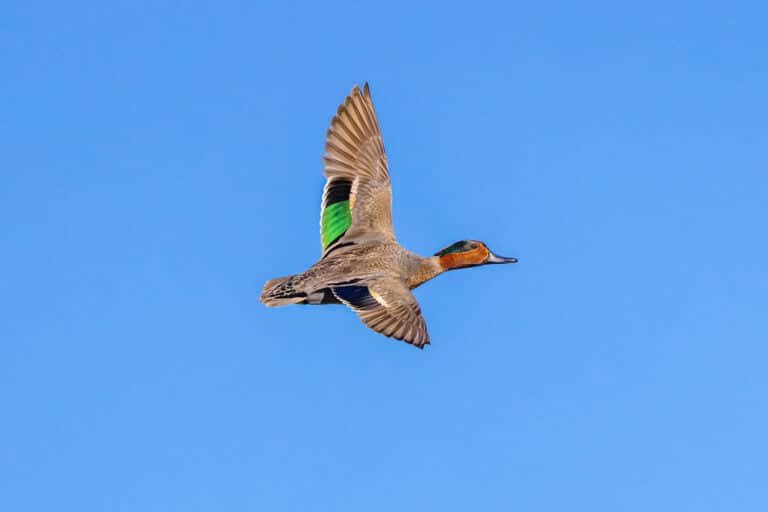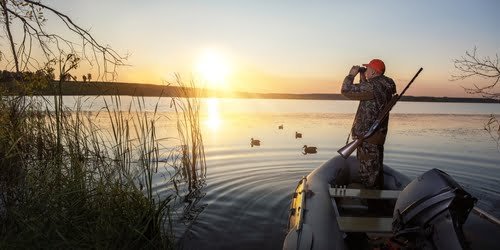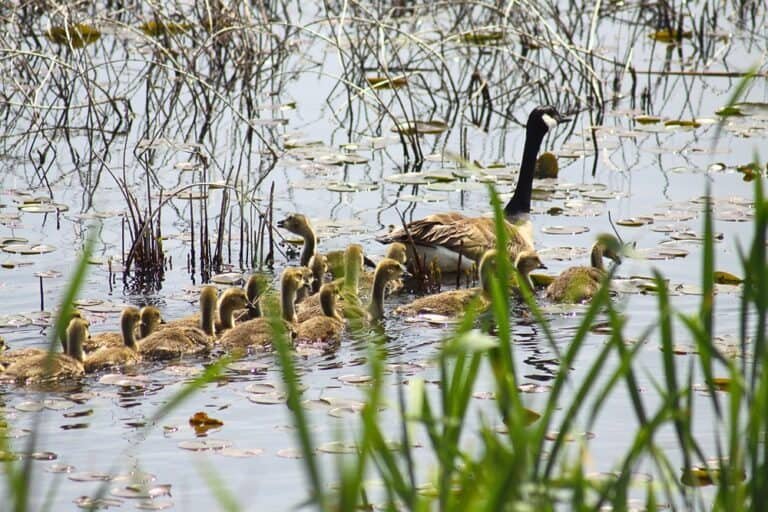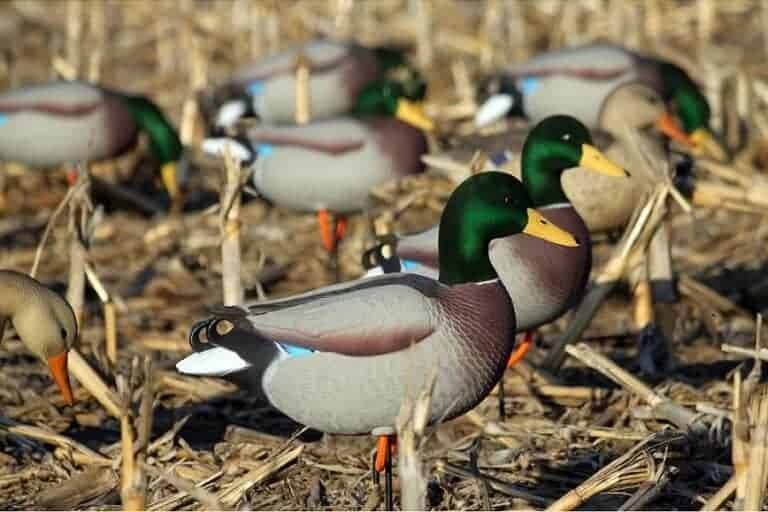Duck Hunting Arkansas: A Popular Destination in 2025
Duck hunting Arkansas is not just a pastime; it’s a way of life. Nestled in the heart of the Mississippi Flyway, this southern state boasts an unrivaled reputation as a premier duck hunting destination.
From seasoned hunters to novices seeking thrilling adventures, Arkansas offers an abundance of wetlands, rivers, and rice fields that attract millions of ducks each year. This article explores the rich hunting heritage found in Arkansas and delves into why it has become a revered haven for waterfowl enthusiasts.
Duck Hunting in Arkansas
Arkansas has long been synonymous with duck hunting excellence, drawing enthusiasts from far and wide to its bountiful shores. The state’s unique location provides essential rest stops for waterfowl during their annual migrations along the Mississippi Flyway.
With its fertile land and diverse habitats ranging from flooded timberlands to expansive wetlands, Arkansas serves as critical wintering grounds for countless species such as mallards, wood ducks, green-winged teal, and many more.
Arkansas – A Premier Duck Hunting Destination
What sets Arkansas apart from other states that offer duck hunting is its geographical advantages and the deep-rooted culture surrounding the sport. Duck hunting is deeply ingrained in the fabric of this region, passed down through generations like cherished heirlooms.
The state’s commitment to conservation efforts and responsible wildlife management has helped maintain healthy populations of waterfowl year after year. Moreover, Arkansas offers some of the finest public access areas for hunters to explore.
Wildlife management areas such as Bayou Meto and national refuges like Cache River provide vast expanses where hunters can test their skills amidst breathtaking natural beauty. These areas are carefully managed to ensure sustainable opportunities for residents and visitors alike.
Whether you’re seeking a thrilling hunt or simply yearning to immerse yourself in the beauty of nature, Arkansas stands as a testament to the enduring allure of duck hunting. In the subsequent sections, we will delve into the natural habitat of Arkansas and explore some of the popular duck species found in this picturesque state.
The Natural Habitat of Arkansas
The Mississippi Flyway: A Highway for Waterfowl Migration
Picture this – an aerial highway bustling with thousands of waterfowl, soaring through the vast expanse of North America. This is the Mississippi Flyway, a vital corridor for waterfowl migration that stretches from the upper reaches of Canada’s prairies down to the Gulf Coast. As ducks embark on their annual journey, Arkansas becomes a prominent pit stop along this flyway, offering them a sanctuary and abundant resources to rest and refuel.
Arkansas: A Wetland Wonderland
Arkansas doesn’t hold back when it comes to wetlands, rivers, and rice fields. This state is blessed with abundant natural habitats like magnets for ducks seeking shelter and sustenance during their journey.
The wetlands range from expansive marshes to flooded timber stands, providing ideal conditions for ducks to roost and feed. The numerous rivers coursing through the state, such as the Arkansas River and White River, further enhance its appeal as a duck hunter’s paradise.
Nature’s Playground: Unique Geographical Features
As if its wetland wonders weren’t enough, Arkansas boasts unique geographical features that make it irresistible to waterfowl. The state’s topography includes rolling hills, fertile valleys, and vast floodplains, creating diverse ecosystems teeming with life. The Cache River Basin in eastern Arkansas exemplifies this uniqueness with its cypress swamps and bottomland hardwood forests. Ducks find solace amidst towering trees draped in Spanish moss in this enchanting maze.
Arkansas is an absolute haven for waterfowl due to its position along the Mississippi Flyway and its varied natural habitats. With abundant wetlands, rivers aplenty, and unique geographical features that provide shelter and sustenance, it’s no wonder ducks are drawn to this captivating state.
Whether you’re a seasoned hunter or a nature enthusiast, Arkansas offers an unparalleled experience of witnessing the magnificent waterfowl migration up close and personal. So grab your binoculars or shotgun, and get ready to immerse yourself in the remarkable natural habitat of Arkansas.
Mallards: The Regal Rulers of Arkansas
Physical Characteristics and Behavior Patterns
Regarding duck hunting in Arkansas, one cannot overlook the majestic mallard. These ducks have striking emerald green heads, vibrant chestnut breasts, and snowy white neckbands.
Mallards are also the largest dabbling ducks, with males (drakes) boasting an impressive wingspan of up to 36 inches. Their behavior is equally fascinating: they are known for their quacking calls that echo across marshes and their distinctive courtship displays during the breeding season.
Preferred Habitats and Feeding Habits
Mallards are highly adaptable and can be found in various habitats throughout Arkansas. They prefer shallow wetlands such as flooded timber, marshes, or agricultural fields where they can find abundant aquatic plants and invertebrates to feast upon.
These omnivorous creatures have a diverse diet, including plants like wild rice and smartweed, small insects, snails, and even small fish. It’s no wonder why Arkansas’s vast wetlands make for prime mallard habitat.
Wood Ducks: Nature’s Colorful Enigmas
Distinctive Features and Nesting Habits
Enter the wood duck—nature’s artist at play. These lively avian wonders have vibrant colors on their feathers like a painter’s palette coming alive.
Wood ducks exhibit nature’s finest artwork, from iridescent greens on their crests to intricate patterns of white stripes along their sides. Nesting-wise, these ducks have unique habits—they often choose tree cavities or artificial nest boxes instead of building traditional nests on the ground or in dense vegetation.
Finding the Elusive Beauties
While wood ducks can be spotted throughout Arkansas, certain locations offer better chances of witnessing their beauty up close. The White River National Wildlife Refuge is a woodland haven where these colorful enigmas thrive.
With its extensive bottomland hardwood forests and meandering waterways, this refuge provides an ideal setting for wood ducks to nest and raise their young. Another notable spot is the Cache River National Wildlife Refuge, known for its vast wetlands and cypress-tupelo swamps, where wood ducks find ample cover to hide amidst the tupelo gum trees.
Green-winged Teal: The Speedsters of Wetlands

Spotting the Stealthy Teals
In the wetlands of Arkansas, one duck species stands out with its swift flight and petite size—the green-winged teal. These feathered speedsters are known for their rapid wingbeats as they dart through the air with agility. To identify green-winged teal, keep an eye out for their namesake—the stunning emerald-green patch on their wings that contrasts with their chestnut-colored heads and grayish bodies.
Cracking the Hunting Code: Targeting Green-winged Teal
Hunting green-winged teal requires a strategic approach due to their rapid movements and cautious nature. Since they prefer shallow waters like mudflats or flooded fields, hunters often utilize layout boats or portable blinds that blend into these environments seamlessly.
Decoys resembling teal can also be strategically placed to attract passing flocks. Additionally, using fast-presentation calls mimicking the distinct whistling sounds of these ducks can help lure them within shooting range.
Remember, each duck species brings its own unique charm to Arkansas’s vibrant hunting scene—be it mallards’ regal allure, wood ducks’ colorful mysteries, or green-winged teals’ swift elegance. Understanding their physical characteristics, behavior patterns, preferred habitats, and hunting techniques adds an extra thrill to the pursuit of these magnificent birds.
Prime Duck Hunting Locations in Arkansas
Bayou Meto Wildlife Management Area: Renowned for its large-scale waterfowl hunts
Located in east-central Arkansas, the Bayou Meto Wildlife Management Area is a true haven for avid duck hunters. Spanning over 33,000 acres, this vast expanse of wetlands offers an ideal setting for large-scale waterfowl hunts. The area’s layout features a combination of flooded timber, sloughs, and open water that entices ducks to flock here during the migration season.
The flooded timber provides excellent cover and creates an authentic hunting experience as ducks navigate through the dense vegetation. Additionally, the sloughs act as natural feeding grounds for ducks, attracting them in large numbers.
The success of hunting at Bayou Meto is not only dependent on its diverse terrain but also on seasonal variations. During early fall, when migrating ducks arrive, they are more likely to scatter across the area as they explore different feeding opportunities.
However, as winter approaches and food sources become scarcer elsewhere, the concentration of waterfowl at Bayou Meto significantly increases. Thus, timing your visit during peak migration periods can greatly enhance your chances of a successful hunt.
Cache River National Wildlife Refuge: Rich biodiversity attracts numerous duck species
Nestled in northeastern Arkansas lies the Cache River National Wildlife Refuge – a breathtaking sanctuary that beckons both seasoned hunters and nature enthusiasts alike. Stretching over 58,000 acres and encompassing various habitats such as swamps and bottomland hardwoods, this refuge boasts an impressive biodiversity that attracts numerous duck species.
The diverse range of habitats found within Cache River makes it an enticing destination for ducks seeking shelter and sustenance. The swamplands provide ample cover while offering easy access to nutrient-rich food sources like submerged aquatic vegetation and invertebrates.
Meanwhile, the bottomland hardwood forests adjacent to the swamps provide ideal roosting sites for ducks. Navigating the waterways of Cache River effectively is essential to maximize your hunting experience.
Paying close attention to the refuge’s marked channels and understanding the flow patterns of the river will ensure a smooth journey. Additionally, utilizing small boats or kayaks equipped with silent propulsion systems will allow hunters to silently glide through narrow channels and cypress-tupelo brakes without alarming their targets.
Arkansas is undoubtedly a duck hunter’s paradise, teeming with prime locations that offer diverse hunting experiences. The Bayou Meto Wildlife Management Area and Cache River National Wildlife Refuge stand out as exemplary destinations, each with its unique features and opportunities for success.
Whether you prefer large-scale hunts in flooded timber or immersing yourself in a richly biodiverse refuge, Arkansas has it all for passionate waterfowl enthusiasts. So pack your gear, study the seasonal patterns, and get ready for an incredible adventure in this magnificent state!
Regulations and Licensing Requirements
Understanding the Rules of the Game
As with any sport or recreational activity, duck hunting in Arkansas comes with a set of regulations and licensing requirements that must be followed. To ensure the sustainability of waterfowl populations and maintain a fair hunting environment, hunters must adhere to these rules. It is essential to familiarize yourself with the Arkansas Game and Fish Commission’s guidelines before setting out on your hunting adventure.
These regulations cover various aspects such as bag limits, shooting hours, and legal hunting methods. It is crucial to stay up to date with any changes in these regulations as they can vary from year to year.
Licensing Requirements
Before embarking on a duck hunting expedition in Arkansas, hunters are required to possess the appropriate licenses. For residents, this usually entails obtaining an Arkansas resident hunting license along with a state duck stamp. Non-residents must obtain a non-resident hunting license, which may include additional fees compared to resident licenses.
Additionally, federal migratory bird stamps are mandatory for all waterfowl hunters aged sixteen years or older. It is crucial to carry these licenses while engaging in duck hunting activities as failure to do so may result in penalties.
Conclusion – Duck Hunting Arkansas
Duck hunting in Arkansas offers an exceptional experience for both seasoned hunters and novices alike. With its diverse habitats, abundant waterfowl species, and well-managed wildlife areas, Arkansas continues to be a top-tier destination for duck enthusiasts from around the globe. However, it is important always to prioritize safety and adhere strictly to regulations set forth by the Arkansas Game and Fish Commission.
By doing so, we ensure the longevity of this beloved pastime for generations yet to come. So grab your gear and immerse yourself in the natural beauty that awaits you on your next unforgettable duck hunting adventure in Arkansas!






